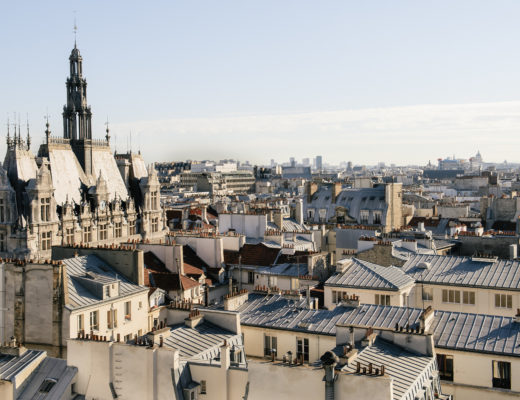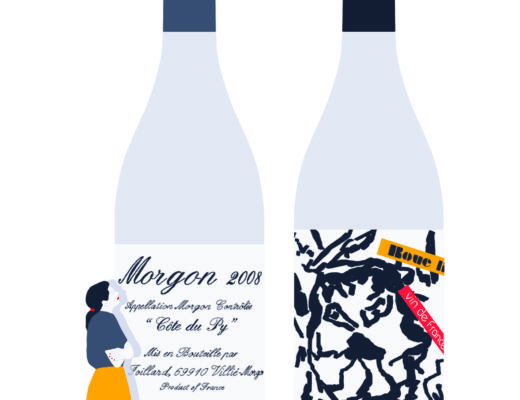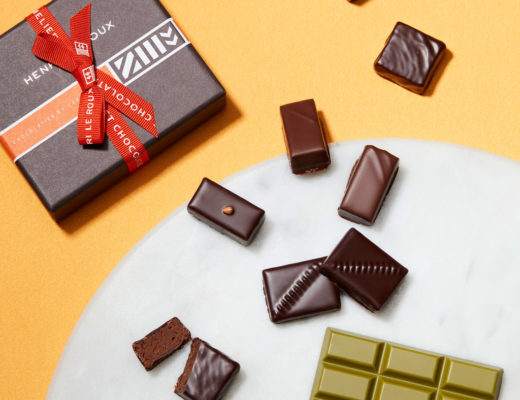When I was in Washington DC in August 2017 to speak about my book to a group of women in the food and wine industry, I met a woman whom I sensed from the moment we spoke that she was serious about making a change. And not some slight modification to her lifestyle or career but a total overhaul. I also knew, it was likely I’d see her again but the next time would be in France.
That’s exactly what happened: Ashley Donahey was still employed by the State Department when she attended my event and spoke to me about considering a big move to pursue an MBA with a specialty in wine & spirits. I was intrigued and blown away by her family ties to France. Later that year, I met with her in Paris as she settled in to reprise her role as a student and begin a new adventure.
I spoke to Ashley about that process, her fascinating and historical connection to France, her new brand Two Worlds Whiskey, and most importantly, what sparked her love of bourbon whiskey.
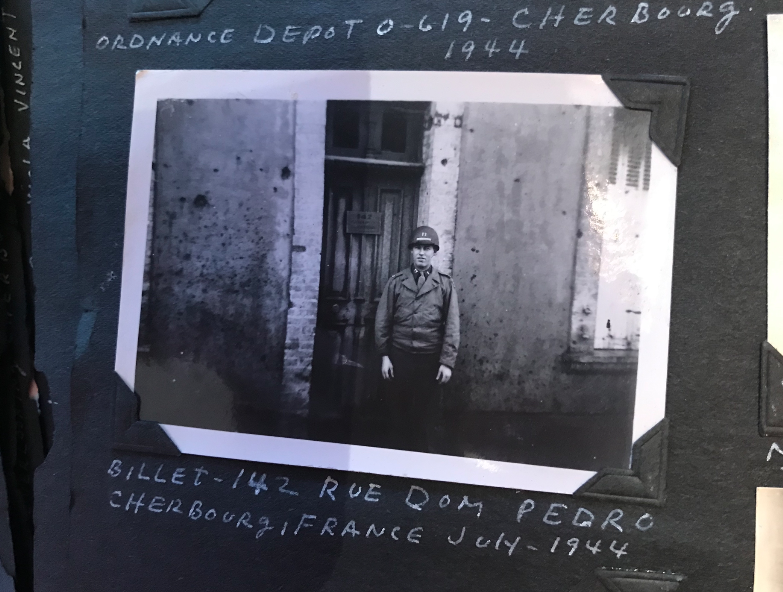
To what do you attribute the pull France has had on your life?
I grew up in a very French-inclined family in a city filled with French cultural ties. I was born and raised in Louisville, Kentucky – named after Louis XVI in honor of the French alliance during the Revolutionary war – and Louisville’s symbol remains the fleur-de-lis. Kentucky is full of places named in honor of the French alliance actually, including La Fayette, La Grange, Paris, Versailles, and of course, Bourbon County.
My family’s affinity for France also goes back to France’s efforts during the revolutionary war, of which my five-times great grandfather William Downard was a veteran. Within my lifetime, however, it was my grandfather Harland Downard, who really instilled me with an early appreciation for France.
My grandfather landed on Omaha Beach during World War II, just a few months after D-Day but before the end of the Battle for Normandy. He was among the very first officers to arrive at the bombed-out port of Cherbourg, and his job was to build a supply depot out of the rubble that would prove critical to the allies’ success as they continued to push across France. He remained in Cherbourg through the end of the war and got to witness first-hand the transformational return of the city from destroyed occupied territory to bustling French port. Although it was wartime, my grandfather always spoke very fondly of his time in France. He felt lucky to be there—a young attorney from rural Kentucky—in this foreign and gorgeous country. He was able to travel around the region and a few times to Paris on supply missions.
When I won a scholarship to study French literature in Normandy, he was so delighted. He pulled out his WWII memory book and proudly walked me through his highlights; meeting Ernie Pile and General Eisenhower, visiting Mont St. Michel, Honfleur, and St. Lo, attending officers’ parties at swanky hotels in Paris. When I arrived in Normandy, I had host-grandparents in Deauville. When they learned my grandfather had served in the France, they asked me to convey to him their personal gratitude and sent me home with a token of French-American alliance to give to him. I could really feel the depth of their sincerity in that moment, and I was so moved by it. I still am.
But if it was my family that inspired my inclination towards France, it was definitely those first experiences as a student that cemented the connection. I studied first in Normandy at the University de Caen for a semester and then about a year later I came back to spend a summer studying in Aix-en-Provence, and that’s where I really fell in love. Aix remains one of my favorite places on planet Earth, but the countryside around it is what really marked me. I stayed with a host mother whose house was actually out of town in the countryside on the delightfully named “Chemin du Petit Cabri,” or little goat path. It was more than an hour’s walk to get from school to our little house on a hill with a view of Mont Saint Victoire. There were supposed to be six students lodged in that house but all but me and one other bailed after seeing how far away it was from town. For me, that walk was magical. Feeling the din of the city quickly fade away and transform into cicada song, taking in the smell of the garrigue wafting through the air, past fields of wild lavender, vineyards, and scraggly pines, saying hello to the chickens that lived just down the way from us. I wouldn’t trade that experience for anything in the world.
Did you know when you left diplomacy and came to France that you’d launch your own brand?
The grain of the idea was definitely there, but the full concept for Two Worlds was one that emerged more gradually as I got deeper and deeper into the whisky scene here. But I knew from the outset that I wanted to move to France to sell bourbon. I actually found a note on my phone the other day dated May 2017 – which would have been around when I wrestling with the idea of whether or not to resign from the State Department – that I had titled “birth of a dream” where I outlined my wildest, #bestlife fantasy that would anchor me through whiskey in the two places I love best: Kentucky and France.
At the time, the idea I had was to set up a small distribution company in France specialized in American whiskey. I knew that bourbon was not particularly popular, but I didn’t know why exactly. My theory at the time was that is simply a question of lack of variety of choice, which is true, but what I learned is that that is only part of the picture.
While I was working on my MBA I started working as a brand ambassador for a high-end scotch brand with La Maison du Whisky. As a brand ambassador, I travelled all over the country working whisky shows, giving masterclasses, and chatting with shop owners, bartenders, and whisky connoisseurs in every nook and cranny of the country. I absolutely loved it. I learned my general tendency toward introversion completely goes away when I start talking with people about whisky.
And through all these conversations, I was able to pick up on a lot of little insights as to why bourbon remains so little known here. It isn’t just the lack of variety. There’s a real misperception here of bourbon being a bottom-shelf, mass market product. As a native Kentuckian and a bourbon lover, that just broke my heart. Most people I spoke to – and keep in mind that some of these people have tried hundreds of whiskies in their lifetime – had only ever had maybe one or two bourbons in their life, typically Jack Daniels black label and Four Roses yellow label, often with a coke, and they decided from that one experience that bourbon was not for them. Now I’m not trying to knock Jack or Four Roses, far from it, but those two bourbons are indeed entry-level mass market brands, and there is a LOT more out there to explore when it comes to bourbon. It would be like if I tried Label No. 5 with a coke and decided from that one experience, that I don’t like scotch. It would be a tragedy!
But when I looked around at what bourbons are available here, there is next to nothing available in that super premium category. Whereas with scotch you can find bottles as cheap as 20€ and as expensive as a 1000€ and at every price point in between, with bourbon the offer just drops off after about 60€. There are a few collector-level bottles that make their way into the country, but only those who already know what to look for and where and when to buy them have access. Those bottles typically arrive once or twice a year, and those in the know snap them up within a few hours, and in some cases, only minutes. So if you’re just scanning the shelves of your local shops in search of a good whisky, you are never going to just accidentally stumble on one of those higher-end American whiskies, and you certainly wouldn’t have the chance to taste one.
I decided to write my MBA thesis on the topic of how to bring the image of bourbon in France upscale. As I put together my recommendations, which encompassed everything from production, branding, packaging, and flavor profile, I started to get the idea that what was really needed was a bourbon that was built from the bottom up specifically to appeal to whisky connoisseurs in France. I remember reading through my recommendations and thinking, “You know, someone really ought to do this!” And then I decided that someone would be me.
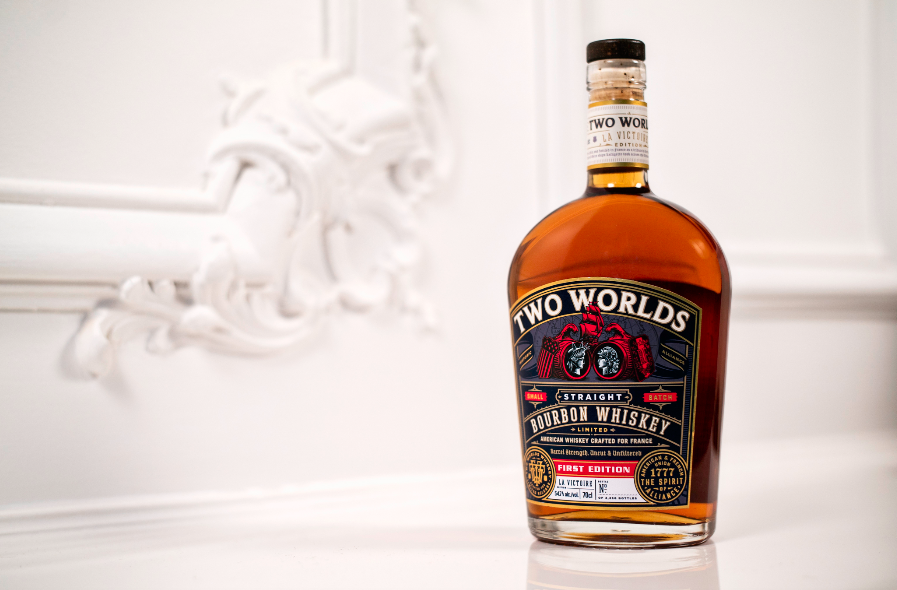
For all the other amateurs out there: what is the difference between bourbon whiskey and other types of whiskey?
A lot of people will first point to the fact that bourbon must be distilled from at least 51% corn, as opposed to say 100% malted barley as required for a Scotch single malt. But really the aspect of bourbon that most marks the style is not the grains it’s made from, but the way it is aged.
Bourbon must be aged in new, charred oak barrels. Why is it significant that the barrels be new? Barrels are like tea bags: each time they are used to age a spirit, less and less flavor is imparted from the wood to the spirit. Why does it matter the barrels must be charred inside? Well, the vanilla flavor comes from vanillin, an organic compound found naturally in oak. The caramel flavor comes from the natural sugars present in the oak that are released and caramelized when the interior of the barrel is charred prior to use for aging bourbon. When people think about bourbon, the first flavors that tend to come to mind are vanilla and caramel. That sweetness does not come from the corn, it comes from the wood.
The other notable difference in the way bourbon is aged versus other whiskies has to do with where the barrels are aged. In Scotland, the climate is a lot colder and wetter than Kentucky. Temperature and humidity have an enormous effect on the character of a whisky. When a barrel heats up, the spirit inside expands and pushes deeper into the wood, which is where the whisky is going to develop most of its character. The more that whisky cycles into and out of the wood, the more quickly it’s going to develop in complexity. Likewise the humidity is going to influence the whisky via the angel’s share, or the liquid that evaporates out of the barrel as it ages. The more humid the air, the more alcohol will evaporate as opposed to water, making the whisky decrease in potency over time. The drier the air, the more water is going to evaporate in relation to the alcohol, leaving you with a more condensed, potent spirit. Most barrel aging warehouses in Kentucky, which we call rickhouses, are above-ground with no climate control and the barrels are stacked on their sides via a ricking system that is usually multiple stories high. What that does is let the barrels be maximally exposed to nature and all the huge temperature swings that we get both daily and seasonally in Kentucky, and it results in some really unique whiskey.
How would you describe French consumption of whiskey?
In terms of consumption, for serious whisky lovers in France, it’s all about tasting neat. While some people might occasionally enjoy a whisky-based cocktail, they remain far less popular than in the UK or the United States. There are a few great whisky bars around the country where people can enjoy a dram of some really high-end whisky without having to invest in the whole bottle. Here in Paris, Golden Promise has an incredible selection of rare whiskies, with a particular emphasis on Scottish and Japanese whiskies, though they do have several very special bottles of American whiskey as well. Baton Rouge, Moonshiners, and The Beast in Paris all have a good selection of American whiskies. Some of my other favorite whisky bars outside of Paris include Le Grincheux in Strasbourg, Milton Pub in Annecy, Hopscotch Bar and Fat Cat in Toulouse, just to name a few. Not surprisingly, the French have a strong interest in doing whisky and food pairings, and La Zygothèque here in Paris was really a pioneer in that regard.
What you’ll also see a lot of though is private whisky clubs that regularly organize tastings and masterclasses for their members. I always loved those events, because everyone is really passionate and curious and eager to learn. For the most part though, people here are most likely to enjoy their best whisky from the comfort of home and are often learning about new whiskies from their trusted cavistes. There is no shortage of cavistes with incredibly whisky selections in France. There are too many to name them all, but off the top of my head, some of the standouts are La Source in Toulouse, Les Grands Alambics in Chambéry, le Caveau d’Ostwald in Strasbourg, La Java des Flacons in Annecy, Maison Clet in Louviers, and all of Caves Conseil in Provence just to name a few.
What I think is even more exciting here though is the production side. French whisky as a category is still in its early stages of development with around 60 distilleries currently in production and another 40 on the way. I have been closely following the development of French whiskies for some time now, and I think there is tremendous potential here. France has everything it takes to make great whisky, from the grains, to the climate, and of course the incredible savoir-faire in terms of distillation, maturation, blending, and coopering. For the most part though, the distilleries here are making what you could consider to be traditional scotch-style malt whiskey, and what I aspire to create with future editions of Two Worlds Whiskey is a truly French-American whiskey.
I have three ranges I plan to develop for Two Worlds, each named after one of the three ships that carried La Fayette across the Atlantic during the American revolution. The first range, La Victoire, will feature limited edition small batch bourbon whiskies made from barrels of straight bourbon whiskey distilled and aged in the United States that have been carefully selected and blended according to a custom recipe crafted by our master blender. These batches are then shipped to France, where they are bottled at barrel strength. Our first edition from this range – La Victoire, Batch 1 – will soon be released and is currently available for pre-order through April 23 at twoworldswhiskey.com/reserve.
The second range, l’Alliance, will feature straight bourbon and rye whiskies distilled and aged in the United States, then finished in France through secondary maturation in former French wine and spirits casks. For example, we might take a bourbon whiskey already aged in the United States, and then ship it to France where we would let it mature further in barrels that had been used to age a fine red wine, or we may take a rye whiskey and let it further mature in a former Calvados barrel. I have in mind many interesting combinations to explore.
The third range, l’Hermione, is by far the most ambitious of the three and the one I am really the most excited about. L’Hermione whiskies will start with American whiskey distillate (that is to say unaged in wood), which we will import to France and then let mature in new French oak barrels crafted by the best French coopers. Ideally we will develop our aging cellars in Provence, where the climate is similar to that of Kentucky, and where the air can hopefully impart some of that gorgeous garrigue essence on the spirit as it ages, just as some Scottish whiskies take on the briny quality of the air where they are matured. My hunch is that by combining the terroir and savoir-faire of both countries – in this case the grain, water, yeasts, and distillation mastery from the United States; combined with climate, oak, and savoir-faire of France – could make for a truly formidable whiskey.
Why has bourbon been such a misunderstood product and how will you reach French consumers to ‘convert’ them?
On the one hand I plan to remind the French about their role in creating and popularizing the style of bourbon, but really the first and last word for the success of any whisky is always going to come down to taste. So that’s really where Two Worlds starts. Just like there are different preferences between American and French palates when it comes to wine, the same is true for whisky. I pay very close attention when I am doing tastings to how people are describing what they are experiencing. I noticed that when an American is describing a whiskey they really love they’ll often use words like big, bold, and powerful, whereas when a French whisky drinker is really impressed with a whisky, they are more likely to use words like elegant, delicate, refined, balanced.
So from the very beginning, I set out to build a bourbon that would appeal to that elegant, refined French ideal in every aspect of the tasting process. I was fortunate to work with two powerhouses in the bourbon industry, Monica Wolf and Ashley Barnes of The Spirts Group out of Louisville, Kentucky. Monica knows how to unearth all the best bourbon barrels and Ashley is a deeply talented master blender. We started by just sitting down around the kitchen table and I walked them through the profile I wanted to create.
On the nose, I knew I wanted more delicate notes, with an emphasis on more fruity and floral notes, and not just the standard caramel and vanilla that you usually get from a bourbon. I wanted a palate to match the nose that would be elegant, complex, well-balanced, that evolves as it moves across the palate. For the texture, I wanted to go for a really creamy mouthfeel along the lines of a really old Scottish grain whisky, with a really long-lasting finish. I knew I wanted to do barrel strength, because that is the gold standard for whisky connoisseurs, but I wanted to make sure that the alcohol was really well integrated, so that you don’t feel its presence too strongly on the nose or the palate.
I’m delighted to say we were able to pull all that off and then some! For me on the nose I get fresh pear, apricot, honeysuckle, and warm tarte tatin with crème anglaise sauce. On the palate, that tarte tatin really comes through with a creaminess that coats the whole palate, with baking spices, nutmeg, clove, and cinnamon that then rise up as it slides down the palate, and provides for a long and lingering finish, with just a touch of vanilla mint.
Besides the taste, my other mission with Two Worlds is to remind the French of the incredible role they played in creating and popularizing the style of bourbon, and hopefully convincing them to take some pride in that!
Bourbon’s characteristic rich vanilla and caramel notes do not come from the corn used to distill it, despite popular belief, but from the way it is aged. Bourbon is aged in new, charred oak barrels. Bourbon historian Michael Veach has posited that this style of aging may have first been used in the U.S. by two French immigrants, Jean and Louis Tarascon. The Tarascon brothers would age whiskey in charred oak containers, following the French style of aging brandy since the fifteenth century. They then sold their whiskey downriver to French customers in New Orleans who were still partial to their native spirit Cognac. At the time, however, Cognac was hard to come by in the new United States, since it had to be imported and was very expensive. The Tarascon brothers then cleverly marketed their whiskey to their Cognac-loving clientele as a being like brandy but made from corn.
Bourbon may be America’s native spirit, but it has decidedly French origins. Hopefully that will encourage the French to at least give the category a second look!
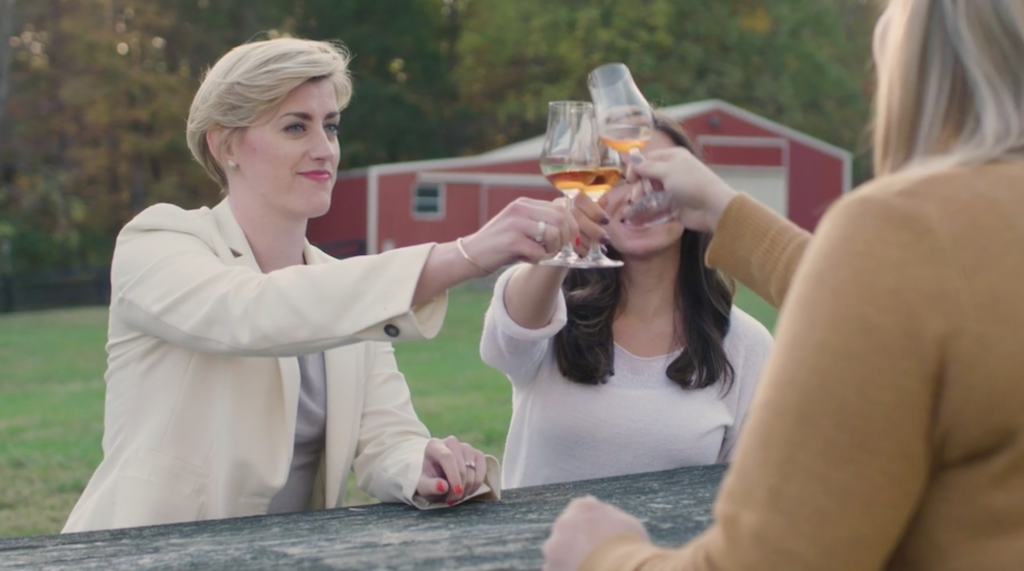
What’s next for Two Worlds Whiskey?
Besides of course getting our first edition bottles into stores and into people homes, the next big challenge will be starting to develop the infrastructure we need to create our second and third range whiskies. Ideally, I would like to get started as soon as I can on developing a site in Provence where we can start secondary maturation for the l’Alliance range and to start filling new French oak barrels with American whiskey distillate for the l’Hermione range. That of course will entail not only acquiring or constructing the aging warehouse, but also commissioning new barrels, and importing more bourbon and ryes from the states. All of which requires significant capital to get the operation up and running, so I will also be working on seeking out investors who will hopefully be as thrilled by the prospect of creating a truly French-American whiskey as we are!
For more, visit Two Worlds Whiskey










